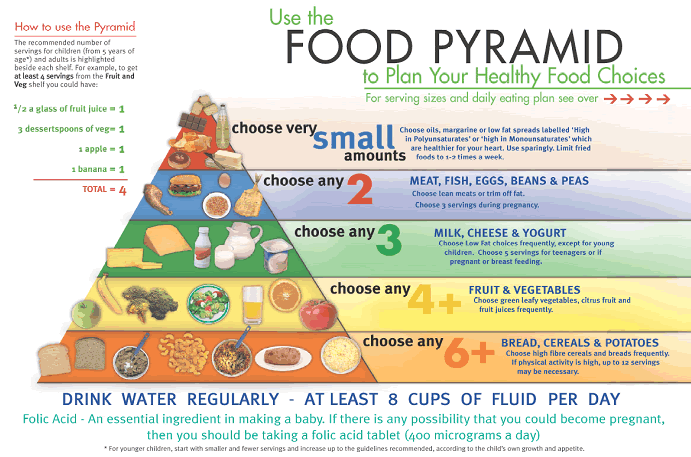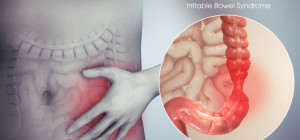 The United States Department of Agriculture has been telling Americans how to eat since 1894, when it issued its Farmers' Bulletin that said men should eat a diet comprised of protein, carbohydrates, fats and "mineral matter." For the latter part of the 20th century, the granddaddy of dietary guidelines was the USDA's Food Guide Pyramid (and the confusing MyPyramid), which had little effect on the overall health and wellness among Americans. Nearly 120 years later, Americans are looking more like pyramids on two legs, registering the highest obesity rates ever. The CDC reports that among children ages 2 to 19, obesity has increased from 5 percent in 1971 to 15 percent in 2010; among adults, it has doubled since 1980 to 30 percent.
The United States Department of Agriculture has been telling Americans how to eat since 1894, when it issued its Farmers' Bulletin that said men should eat a diet comprised of protein, carbohydrates, fats and "mineral matter." For the latter part of the 20th century, the granddaddy of dietary guidelines was the USDA's Food Guide Pyramid (and the confusing MyPyramid), which had little effect on the overall health and wellness among Americans. Nearly 120 years later, Americans are looking more like pyramids on two legs, registering the highest obesity rates ever. The CDC reports that among children ages 2 to 19, obesity has increased from 5 percent in 1971 to 15 percent in 2010; among adults, it has doubled since 1980 to 30 percent.
Although it has been touted as a guide for healthy eating among Americans, based on scientific research, the Food Guide Pyramid has not reduced obesity. It raises the question: Should the agency that was created to look out for agriculture industry's best interests in government be dictating what Americans should eat?
Americans Get Fatter
Americans have long obsessed over obesity and weight, spending billions of dollars every year on weight-loss products, programs, books and services. The obsession reached a high in 2004, when the nation seemed to awaken from a food-induced coma, looked at itself in the mirror and asked: "How did I get so fat?" Popular culture led the charge with the release of these:
- "Food Politics" by Marion Nestle in 2003, which talks about the food industry's influence over Americans' diets
- PBS "Frontline" series Diet Wars in 2004
- Morgan Spurlock's Super-Size Me in 2004
- The documentary The Future of Food which takes on genetically engineered food and corporate farming, released in 2004
- The TV reality series "Biggest Loser," which debuted in 2004
The more weight we gain, the more money we spend trying to lose it. In 2004, Americans spent $40 billion on the weight loss industry; in 2012, they spent $65 billion, according to MarketdataEnterprises.com, which has tracked the weight-loss industry since 1989.
Choose My Plate
In 2011, ChooseMyPlate.gov replaced the food pyramid, though it's still overseen by the USDA. The new model adheres to the five basic food groups: fruits, vegetables, grains, proteins and dairy. For the first time, the food guide recognizes "personal calorie limits" and offers an online calculator to determine caloric intake based on age, weight, sex, activity level and weight-loss goals. No more one-size-fits-all pyramid.
Flaws With USDA Food Guides
Harvard University's School of Public Health points out flaws with the Choose My Plate guide:
- It doesn't emphasize the benefits of whole grains over processed grains
- It doesn't emphasize lean meats over fatty meats
- It doesn't include healthy fats
- It includes dairy
- It doesn't mention junk food
Perhaps the biggest hole in any of the food guidelines is how to break bad habits and adopt healthy attitudes toward eating. How can a food guide motivate an overweight nation to eat less and move more?
Choose Your Own Food Guide
Conversations and education are the most important steps in slimming down the U.S. population. The government has ramped up disclosure requirements, and more restaurants are disclosing the nutritional breakdown of their menus. Even the much-maligned McDonald's offers low-calorie menu items like the egg-white deluxe sausage McMuffin (250 calories).
Remember that food guides are just that: guides. They lay foundations upon which consumers build their meal plans. A good nutrition plan requires commitment to a few basic guidelines, which don't require billions of dollars to get results:
- Portion control
- Balance among proteins, carbs, good fats and fiber
- Moderation with sugars, bad fats, alcohol and other vices
- Physical activity
If weight loss is a goal, a nutritionist can evaluate your eating habits and help you create a diet plan that's designed to be a lifestyle change, rather than a quick fix. Your family doctor or local hospital can refer you a nutritionist, and in some cases health insurance will cover those fees.







